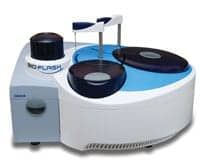The Lawrence Berkeley National Laboratory (Berkeley Lab), Berkeley, Calif, and Internet2, Ann Arbor, Mich, have plans to build one of the world’s fastest and most advanced scientific networks to further accelerate US competitiveness in science and technology. The new network will be built for the Department of Energy by Berkeley Lab’s Energy Sciences Network (ESnet) for its Advanced Networking Initiative (ANI), a $62M American Recovery and Reinvestment Act (Recovery Act) grant.
“To bring ANI online, we are working together to dramatically increase both the capacity and the reach of our networks in a mutually beneficial way. By combining resources and expertise, we are realizing unprecedented synergies, making both of our investment dollars go further.”
Under this agreement, which builds on a long-standing relationship between the organizations, ESnet and Internet2 will work together to construct and operate the new 100 gigabit per second (100 Gbps) ANI prototype network using one of the first national-scale deployments of 100 Gigabit Ethernet technology. The ANI prototype network will significantly increase the information-carrying capacity of ESnet’s present network, which uses 10 Gbps technology.
To build the national network, Internet2 will use fiber strands on Level 3 Communications’ Tier 1 fiber-optic network. ESnet will also have the option to access 4.4 terabits per second (Tbps) of capacity for the ESnet ANI network using Ciena’s 6500 Packet-Optical Platform. The ESnet ANI prototype network will initially connect three DOE unclassified supercomputing centers: the National Energy Research Scientific Computing Center (NERSC) at Berkeley Lab, Oak Ridge Leadership Computing Facility (OLCF) in Tennessee, and Argonne Leadership Computing Facility (ALCF) in Illinois, as well as the Manhattan Landing International Exchange Point (MANLAN) in New York.
During the prototype phase, the network will be used for applications and networking research, including connecting the Magellan cloud computing resources at NERSC to ALCF, and the Acadia project, which will develop network interface controller (NIC) hardware and device-driver/protocol-specific software for host and gateway systems operating at 40 and 100 Gbps. The prototype network will also serve as a platform for building out technologies leading to an eventual 1-terabit per second wavelength network.
The prototype network will contribute to accelerated development and wider deployment of 100 Gbps technologies as manufacturers realize economies of scale. The new network is also intended to help improve US competitiveness in science and technology innovation leading to the development and commercialization of future technologies.
Source: Internet2



